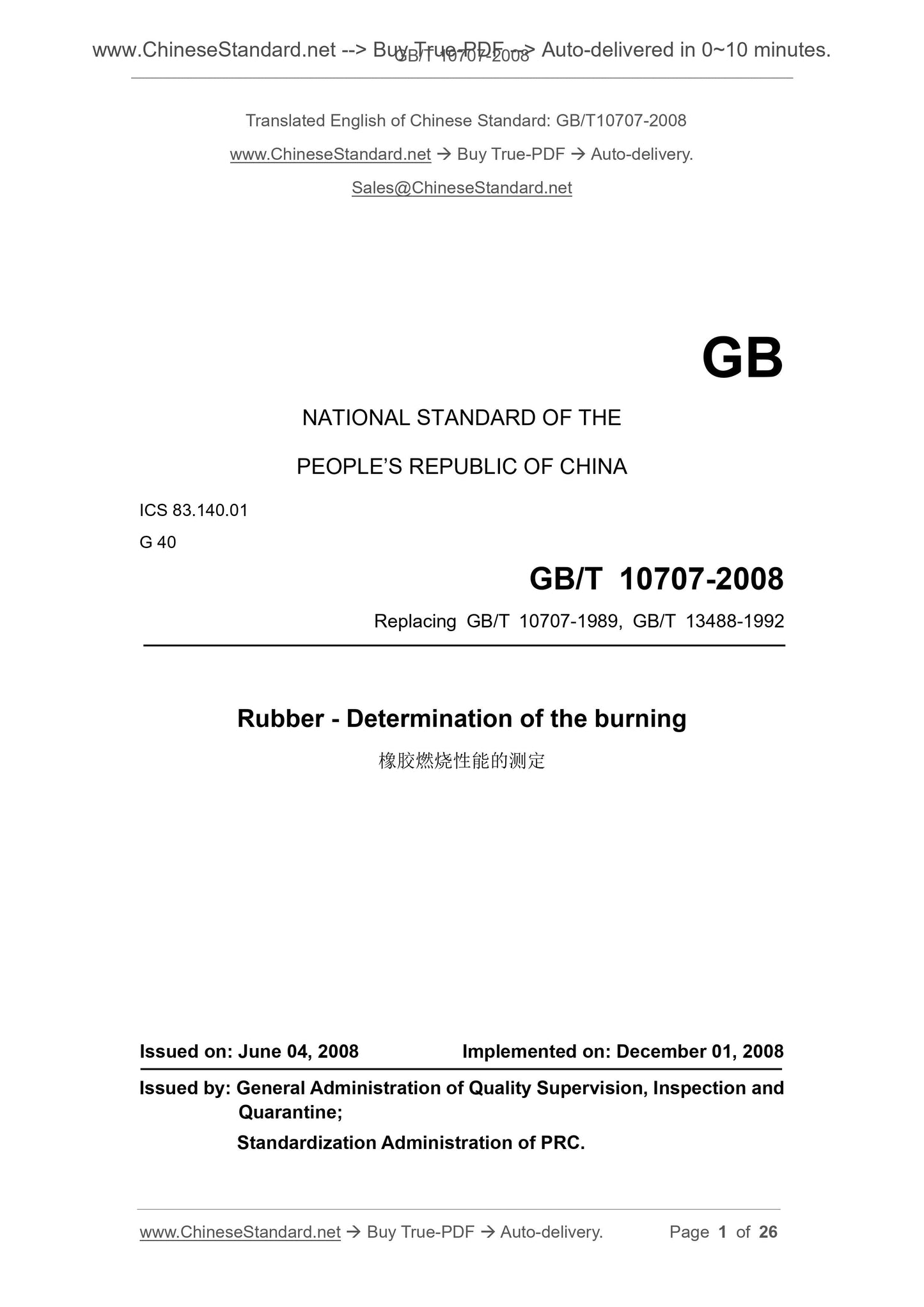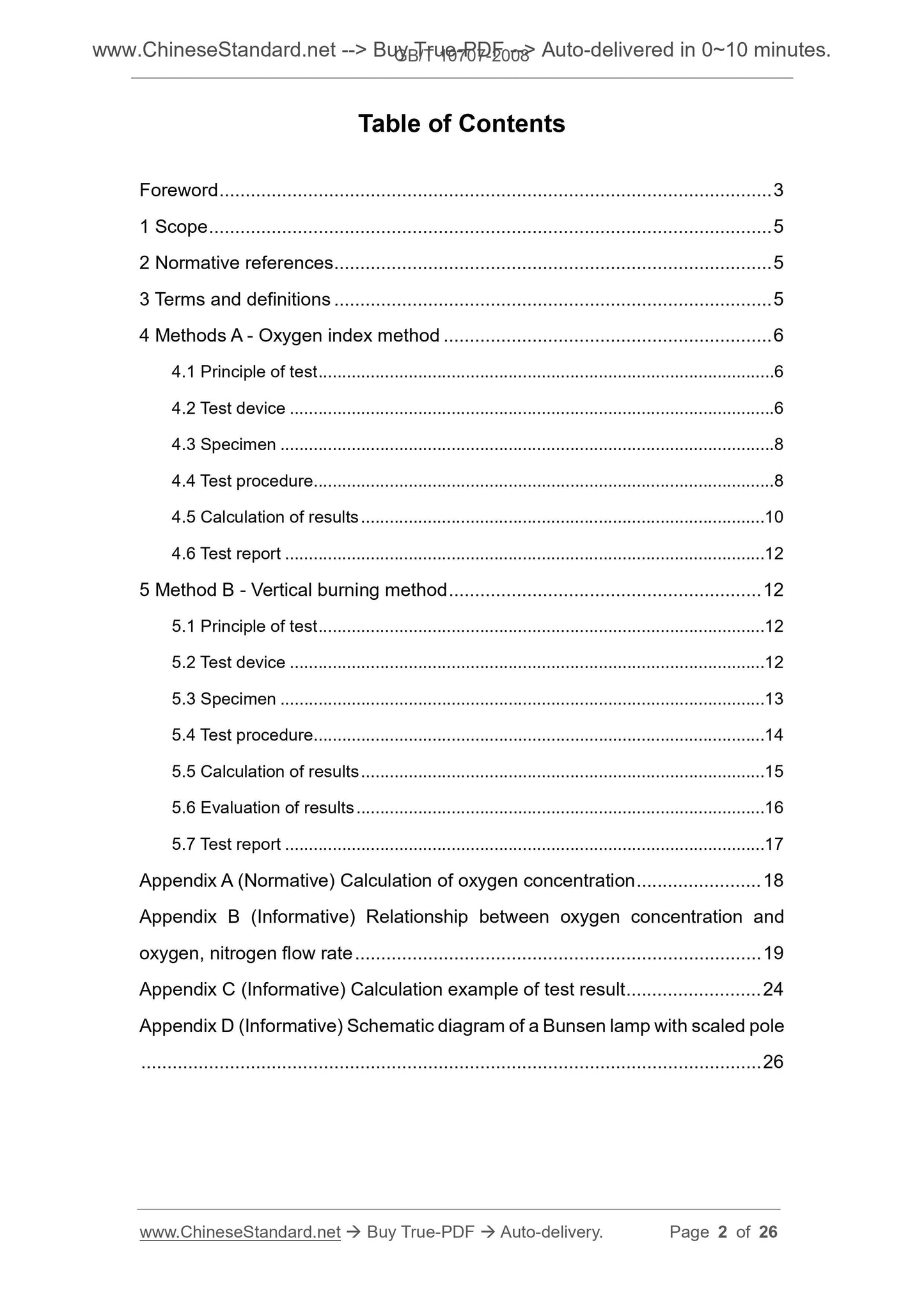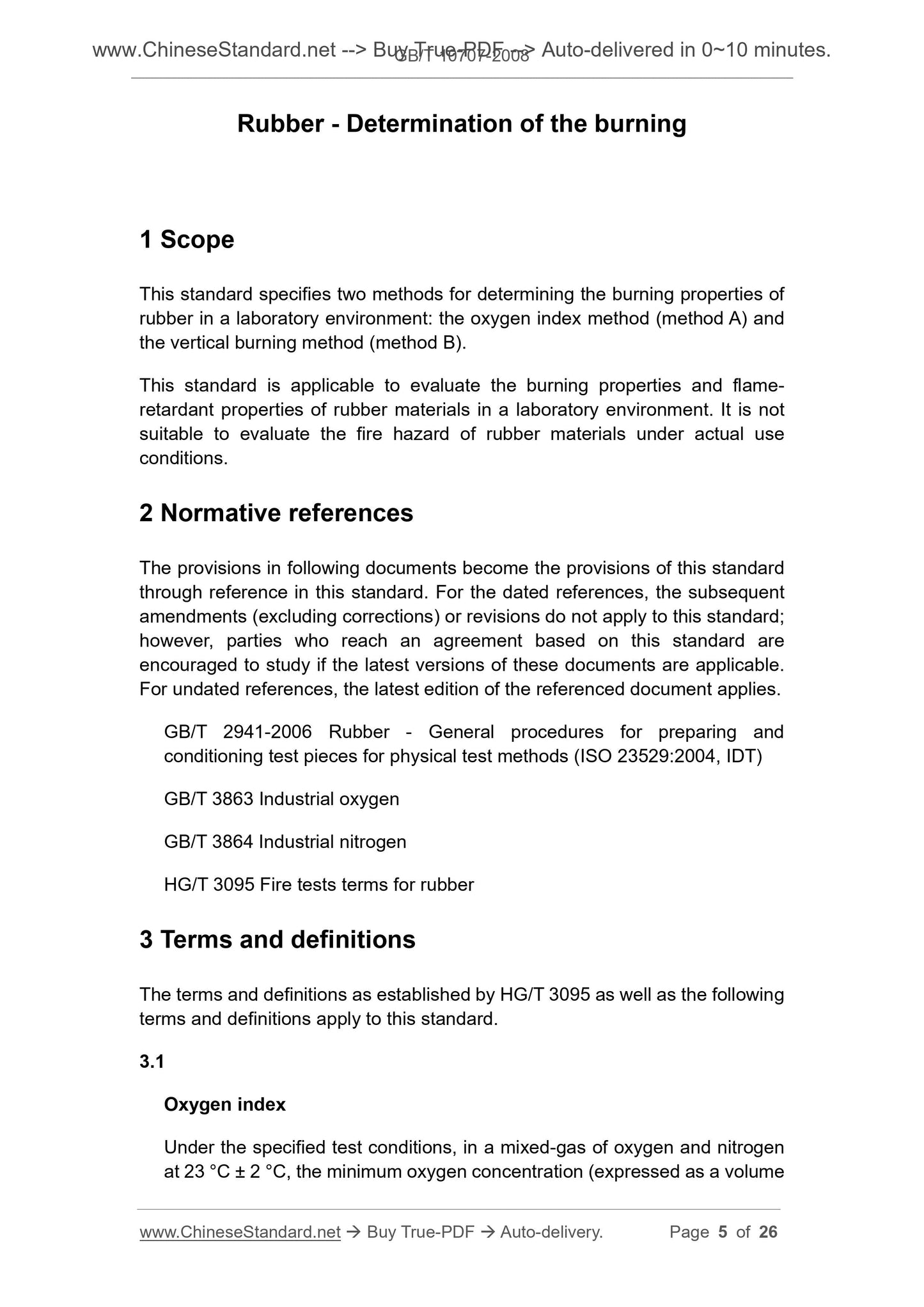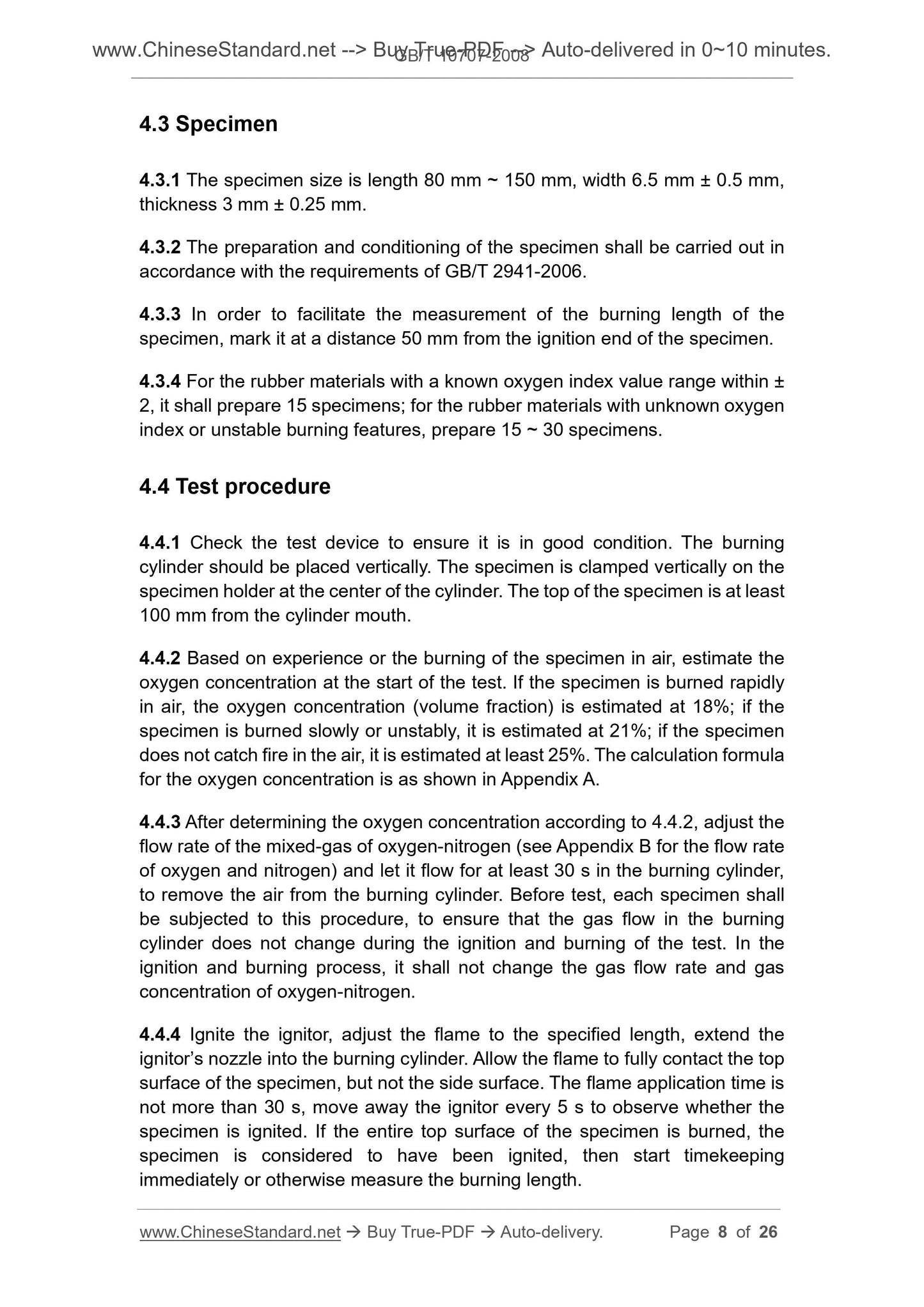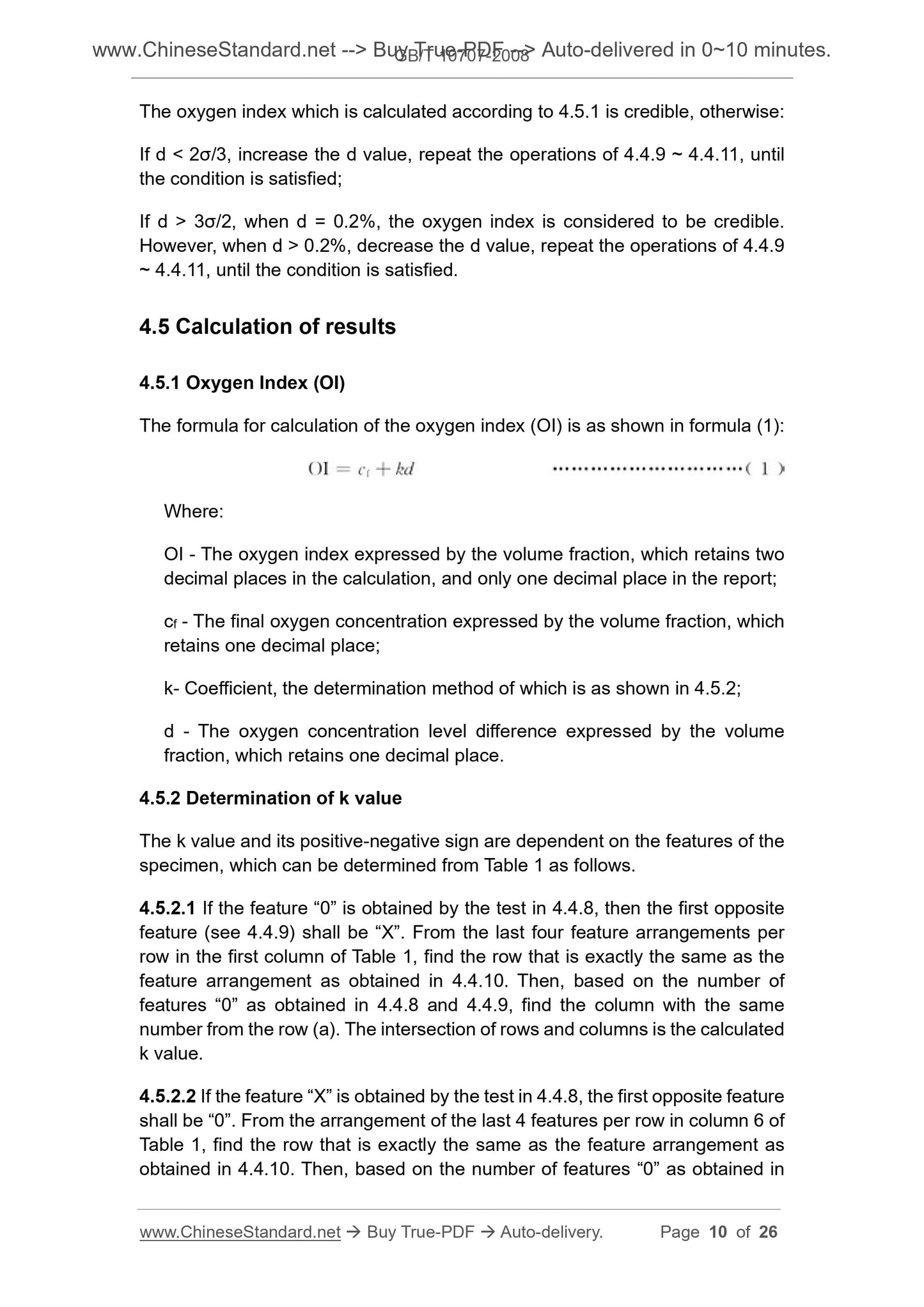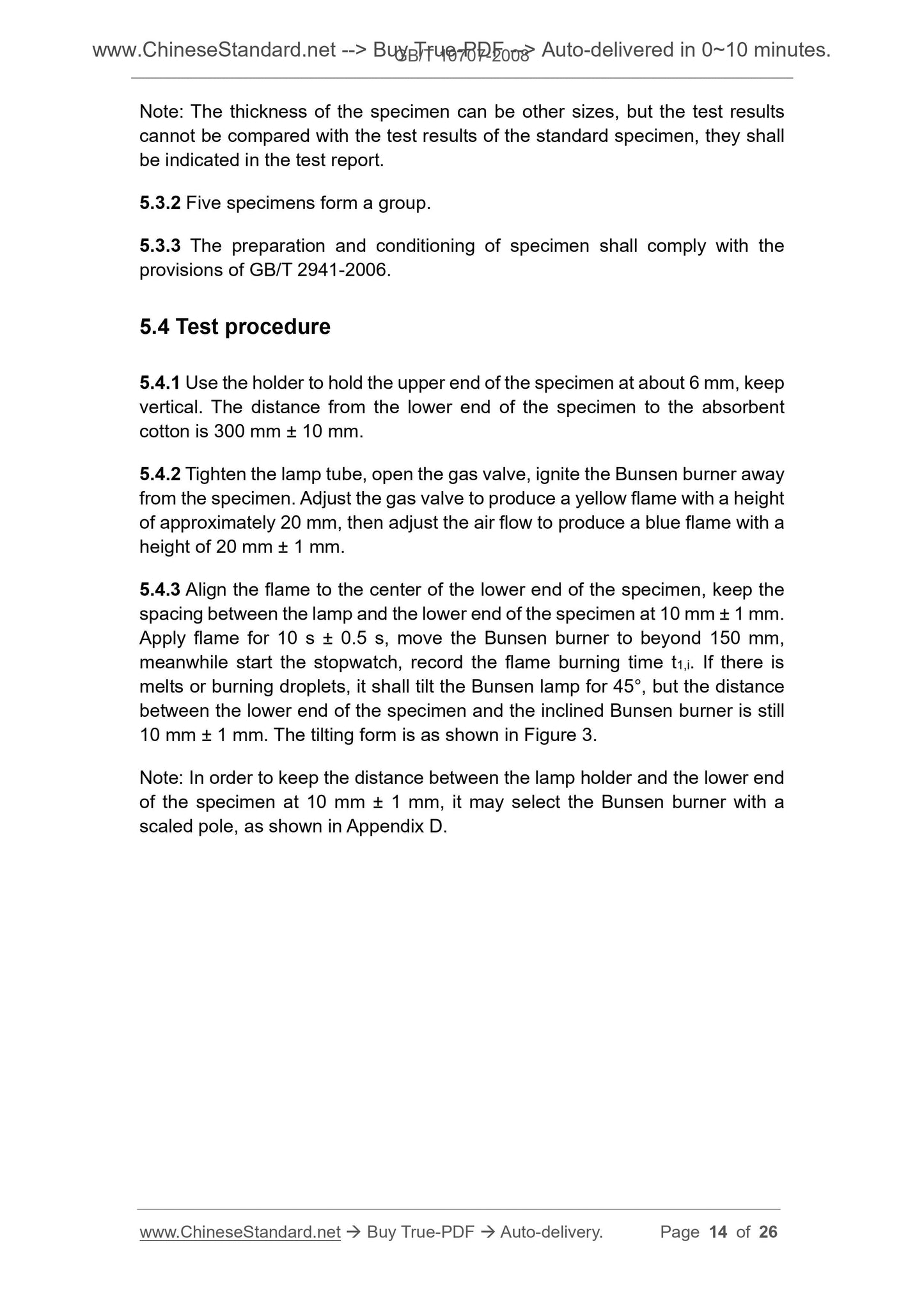1
/
of
6
www.ChineseStandard.us -- Field Test Asia Pte. Ltd.
GB/T 10707-2008 English PDF (GB/T10707-2008)
GB/T 10707-2008 English PDF (GB/T10707-2008)
Regular price
$145.00
Regular price
Sale price
$145.00
Unit price
/
per
Shipping calculated at checkout.
Couldn't load pickup availability
GB/T 10707-2008: Rubber - Determination of the burning
Delivery: 9 seconds. Download (and Email) true-PDF + Invoice.Get Quotation: Click GB/T 10707-2008 (Self-service in 1-minute)
Newer / historical versions: GB/T 10707-2008
Preview True-PDF
Scope
This standard specifies two methods for determining the burning properties ofrubber in a laboratory environment. the oxygen index method (method A) and
the vertical burning method (method B).
This standard is applicable to evaluate the burning properties and flame-
retardant properties of rubber materials in a laboratory environment. It is not
suitable to evaluate the fire hazard of rubber materials under actual use
conditions.
Basic Data
| Standard ID | GB/T 10707-2008 (GB/T10707-2008) |
| Description (Translated English) | Rubber - Determination of the burning |
| Sector / Industry | National Standard (Recommended) |
| Classification of Chinese Standard | G40 |
| Classification of International Standard | 83.140.01 |
| Word Count Estimation | 19,166 |
| Date of Issue | 2008-06-04 |
| Date of Implementation | 2008-12-01 |
| Older Standard (superseded by this standard) | GB/T 10707-1989; GB/T 13488-1992 |
| Quoted Standard | GB/T 2941-2006; GB/T 3863; GB/T 3864; HG/T 3095 |
| Regulation (derived from) | National Standard Approval Announcement 2008 No.9 (Total No.122) |
| Issuing agency(ies) | General Administration of Quality Supervision, Inspection and Quarantine of the People's Republic of China, Standardization Administration of the People's Republic of China |
| Summary | This standard specifies the performance of the two methods of burning rubber in the laboratory environment: oxygen index combined vertical combustion method. This standard applies to assessment under laboratory conditions and combustion properties of rubber material flame retardant, does not apply to fire risk assessment under actual conditions of the rubber material. |
Share
